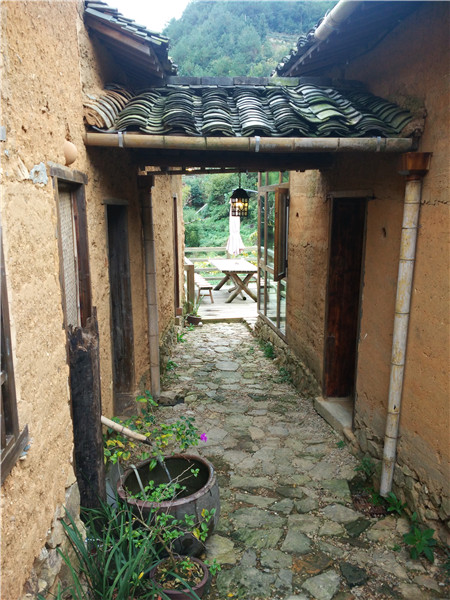Reviving rural abodes
But, the villagers did not have enough money to renovate. And, local cultural authorities were reluctant to finance the restoration of privately-owned property.
Fortunately, a trial project was launched in 2015 to save the hou
 |
|
An abandoned cowshed in Youtian has been restored and turned into a countryside inn. WANG KAIHAO/CHINA DAILY |
The China Foundation for Cultural Heritage Conservation, a Beijing-based public fund, offered an option to the villagers to renew their homes.
"We were provided with half the money we needed to restore the houses, and the rest we managed ourselves," says Ye.
"The villagers decided how to use their houses in the future, and the renovation plans were adjusted accordingly," he says.
Fifty villages in Songyang, including Youtian, are now on a national list of "traditional Chinese villages". This puts it at the top of county-level administrative regions in East China, and there are still dozens of similar villages that have not made the list yet.
Meanwhile, the foundation plans to spend 40 million yuan ($5.8 million) in Songyang on renovation of more houses in the area.
The county has also set up a special administrative office to supervise the use of funds. More than 1,000 houses in 80 villages are to benefit from the money.
But despite the efforts being made, the foundation wants to be sure that the money is spent wisely.
"Sometimes, when too much money is spent by the government on restoration, the result is often not ideal and does not cater to the villagers' needs," Li Xiaojie, chairman of the foundation, says.
"So, those who use the houses should have more say. It's equally important to let villagers live comfortably after the restoration."
He also says that villagers could take things for granted if the government repeatedly takes the initiative to repair the old houses.
As a result, the villagers now have to apply for the fund, rather than being bestowed with largesse to restore their houses.
Under the current project, there are now 105 applicants, and renovations have begun in 42 houses.
"We would like the money to become a tool to mobilize more social effort," says Li. "It is a move to seek the greatest common dividend for all concerned."
Though the project emphasizes the future functions of the houses, standards of maintaining cultural heritage sites should still be followed, says Lu Yuanzheng, deputy director of the Zhejiang Provincial Institute of Ancient Architectural Design and Research, which is participating in the restoration.
"It (the project) is like repairing the Forbidden City in Beijing," he says. "When things can be fixed, they will not be replaced.
"And, we cannot combine different architectural styles in the restoration, so we rely on local artisans. That is a good chance to revitalize traditional craftsmanship."
But, he admits that challenges remain. For instance, he says, if a house is co-owned by different families, the owners often have different views on how the house should be revamped.
"That is why we need a system to work out how much money is needed for each restoration.
"A customized plan is needed for each case, but certain technical standards have to be set for general guidance."
Songyang is currently listed by the Ministry of Housing and Urban-Rural Development and the State Administration of Cultural Heritage as the country's only trial region for the revitalization of traditional villages.
















